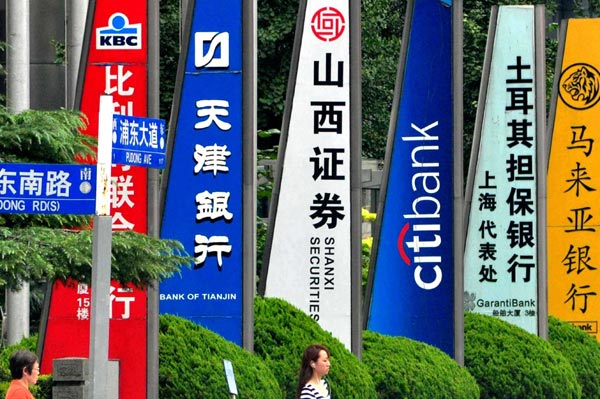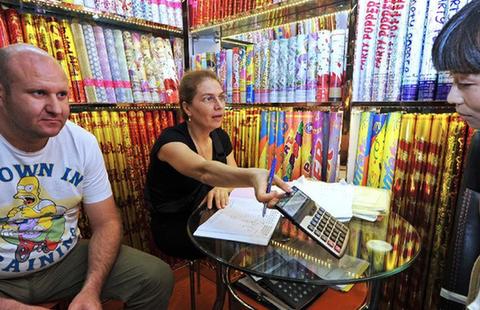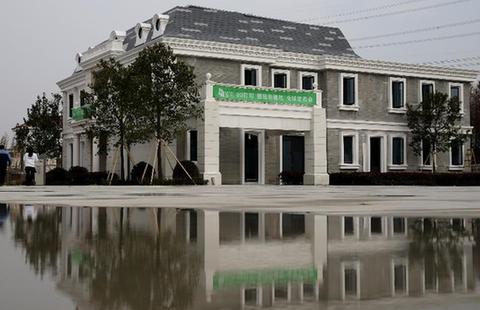Policy changes loom for financial institutions
By JIANG XUEQING (China Daily) Updated: 2015-01-20 10:18
|
 |
|
Banners for financial institutions in a street in Shanghai. [Photo/China Daily] |
Increasing nonperforming loans, rise of Internet finance among major challenges for sector this year
Regulators are expected to further cut interest rates and reserve requirement ratios, ease the rules on loan-to-deposit ratios and continue opening up the financial sector by giving a green light to the establishment of more private banks this year. Here are some policy changes that economists and banking analysts are widely expecting:
Changing rules on loan-to-deposit ratio calculation
Starting on Jan 1, the central bank eased the stringent loan-to-deposit ratio requirement for commercial banks to leave more liquidity available for lending.
The loan-to-deposit ratio is a statutory supervisory indicator intended to prevent banks from excessive lending. Domestic banks are allowed to lend up to 75 percent of their deposits.
The People's Bank of China has expanded the base for calculating loan-to-deposit ratios by including in the calculation of deposits the savings that are held by banks for non-deposit-taking financial institutions.
China International Capital Corp said the rule changes could see an extra 7 trillion yuan ($1.14 trillion) of savings held by banks for non-deposit-taking financial institutions classified as deposits. As a result, banks' loan-to-deposit ratios may drop to 60 percent from 64.2 percent at the end of September, CICC's analyst Huang Jie estimated.
By classifying more kinds of savings as deposits, commercial banks will have less pressure to compete for deposits. It will bring down deposit and lending rates and eventually help lower the financing costs for domestic companies, said Lian Ping, chief economist at the Bank of Communications Co Ltd.
Although banks should set aside additional reserves for the newly included deposits, the PBOC has set the reserve requirement ratio at zero for the time being, which means banks do not need to hold additional reserves at present.
- Economic growth edges to 24-year low of 7.4%
- Carmaker Autoeuropa exports rise by 12% in 2014
- Chinese 'makers' turn fake products market into innovation base
- Wang reported to take 20 percent stake in Atletico
- WEF expects to know more about fresh opportunities from China
- China's energy giant willing to cooperate in Arctic resources extraction
- Exports of Zhejiang in 2014 increase 8.8% year on year
- Regular inspection not to suppress stocks
















